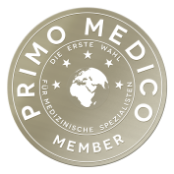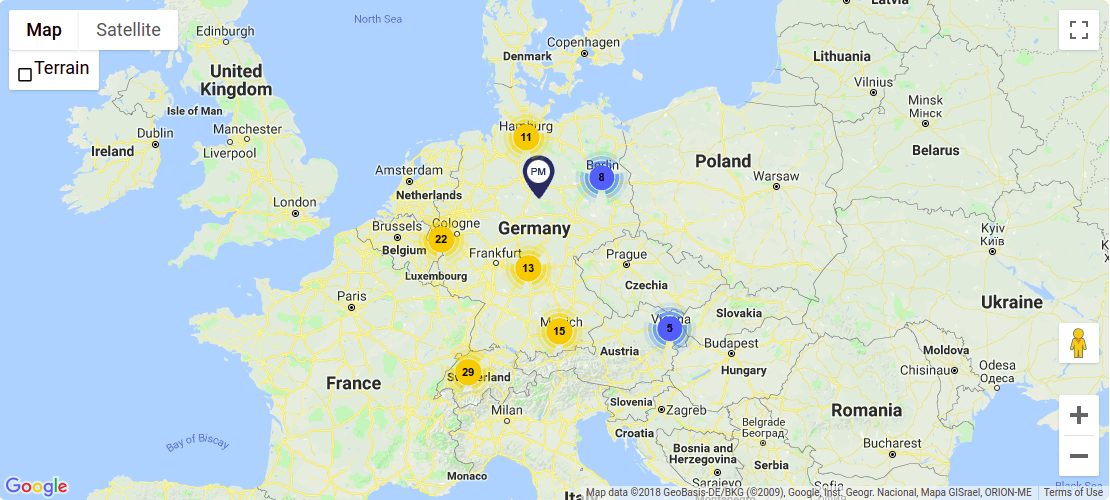Pediatric Cardiac Surgery Duisburg (NRW): Dr Michael Scheid
Treatment focus
- Complex heart defects in newborns and infants
- Univentricular heart defects
- Heart valve repair and replacement (minimally invasive)
- Aortic surgery
- Septal defects (ASD II, sinus venosus defect, partial AV canal, VSD)
- Surgical duct closure
- Rhythm surgery (pacemakers, defibrillators)
- Surgeries in adults with congenital heart defects (EHAM)
Contact
Duisburg Heart Center
Pediatric Cardiac Surgery and Congenital Heart Defects Section
Gerrickstraße 21, D-47137 Duisburg
P: +49 203 3969 3524 F: +49 203 451 3258
Consultation Hours:
Monday-Friday: 7:30 AM - 5:00 PM
by appointment

More Information
Card
Dr Michael Scheid is a specialist in pediatric cardiac surgery and head of the Pediatric Cardiac Surgery and Congenital Heart Defects Section at the Duisburg Heart Center of the Evangelisches Klinikum Niederrhein.
Dr Scheid's team of experts has many years of surgical experience and the equipment to treat congenital heart defects, which are among the most common congenital malformations in children. All corrective and palliative surgeries for heart defects are diagnosed and effectively treated by the experts quickly, efficiently, and as gently as possible, regardless of the patient's age.
Highest Expertise in the Treatment of Complex Heart Defects in Newborns and Infants
The cardiac surgery team led by Dr Scheid at the Duisburg Heart Center brings many years of well-founded knowledge in treating complex cardiac defects to the service. Due to the complexity of congenital heart defects, the team offers individual treatment concepts adapted to the patient. The highest qualitative standards, state-of-the-art therapeutic procedures, and many years of professional experience represent the successful concept of the Heart Center.
The surgeons work closely with the Department of Cardiology so that optimal and interdisciplinary treatment can be assumed. Great importance is attached to the closeness to the patients and their parents so that those affected can feel well cared for and every question finds an open ear. The families' wishes are prioritized, and decisions are made together.
Pediatric Cardiac Surgery in Duisburg: Univentricular Heart in Newborns
The term univentricular heart is used to describe various congenital heart defects. These include hypoplastic left heart syndrome, characterized by complete underdevelopment of the left side of the heart, and heart defects with a missing or rudimentary ventricular wall.
Due to the lack of formation of two functioning ventricles in univentricular heart defects, the mixing of oxygen-poor and oxygen-rich blood occurs. Due to the reduced oxygenation of the blood, the infant appears exhausted and possibly with pale to bluish skin color, and the newborn's breathing rate is often accelerated. In very pronounced forms such as hypoplastic left heart syndrome, circulatory failure occurs after birth, making rapid action necessary.
The treatment is usually based on a surgically staged scheme and connected to several necessary corrective surgeries.
Dr Scheid's team brings many years of expertise to the treatment of hypoplastic left heart syndrome. The treatment plans adapted to the children are determined together with the parents. The surgeons routinely carry out the surgical procedures. After surgery, the children are cared for with their parents in the Department of Pediatric Cardiology and Congenital Heart Defects.
Minimally Invasive Heart Valve Repair and Heart Valve Replacement
Many heart defects can be corrected using a minimally invasive surgical procedure. These include, in particular, separation wall defects of the heart and valve reconstructions. By choosing a short access route, a complete chest opening is unnecessary. Physicians open the chest through a small lateral incision or by partially opening the sternum.
Minimally invasive procedures reduce soft tissue damage and can facilitate wound healing. Catheter-directed methods for heart valve replacement or repair may also be considered. In these cases, the choice of procedure is discussed individually with the parents.
Surgical Ductal Closure in Premature Babies
Before birth, an unborn child has a connection between the pulmonary artery and the aorta, the main artery. This bypasses the pulmonary circulation during the fetal period while the lungs are not yet ready for functioning. With the first breath after birth, the lung unfolds, and the blood circulation of the newborn changes to include the organ.
Usually, the ductus arteriosus closes by itself a few days after birth. If the congenital opening does not close automatically, this can lead to problems in the later stages. Blood from the aorta returns to the lungs, leading to an increased volume load. Newborns show shortness of breath and, in the course, signs of cardiac insufficiency caused by the load on the left ventricle. Symptoms here correlate with the duct size; small openings may remain asymptomatic initially and sometimes for more extended periods.
Persistent ductus arteriosus accounts for approximately 8-12 percent of all congenital heart defects. Premature infants, in particular, carry an increased risk that the original physiologic connection will remain open after birth.
Initially, treatment is usually attempted with medication. If unsuccessful, interventional or surgical treatment is used. A small umbrella can be pushed in front of the opening with a cardiac catheter in older infants and children so blood can no longer return to the pulmonary artery. However, surgical closure of the patent ductus arteriosus can also be carried out by the Department for Cardiac Surgery surgeons in newborns and extremely premature infants.
Rhythm Surgery: State-of-the-art Therapy & Treatment for Cardiac Arrhythmias
If the heart's conduction system is disturbed, the rhythm of the heart's action may become irregular or slowed down. This can subsequently cause an insufficient supply of oxygen to the body. Patients feel dizziness, restlessness, palpitations, and possibly trepidation. In severe cases, ventricular fibrillation can develop, which leads to death if left untreated.
To treat arrhythmias, the surgical team places pacemakers, defibrillators, and other implants to help the heart maintain a regular rhythm. This requires a minor surgical procedure under general anesthesia, which usually has few complications.
Transport Connections
| Duisburg Main Station | 6.6 km |
| Essen/Mühlheim Airport | 21 km |
| Düsseldorf Airport | 28 km |
| Köln/Bonn Airport | 75 km |
Information about Duisburg
Duisburg is the hinge into three regions: the idyllic Lower Rhine, the bubbling Ruhr area, and the legendary Rhine rail.
Duisburg, the inland port city on the Rhine and Ruhr, stretches from the western edge of the Ruhr metropolis to the Lower Rhine and merges with the Rhine rail to the south. The city sees itself as a hub of tourist and logistical routes and assumes an interesting hinge function within the varied regions.




